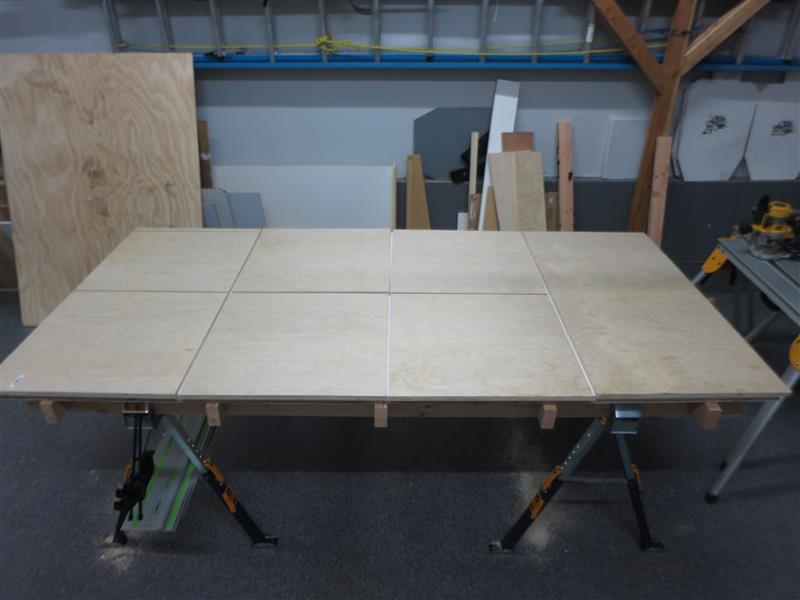In a previous thread, I posted some pictures of a drill press cabinet I had made to fit my Harbor Freight floor drill press, that is probably one of the best things with a cord to ever come from China. My friend Jim has the same drill press, and asked if I could build him a similar cabinet. I had a bunch of stuff left over from other projects, and I realized I had almost everything I needed to build one more. While I was building this one, I took a lot of pictures, and figured I'd share the amatuer wood destruction frenzy with the group here.
So first thing's first, a lesson in plywood:
Really good cabinet grade plywood with 'A' grade veneer faces is really expensive. Like $100 or more per sheet. Home Depot and Lowes put out an assortment of much lower grade ply, usually with paper thin C grade veneers that are very easy to sand through. Even so, their oak, birch, and 'Sande Ply' sheets are usually solid, reasonably void free, and good enough for things that are going to get painted. One day, I walked into Home Depot and saw a stack of 'cabinet ply' on clearance for $34/sheet, versus the $50 I usually pay for their other products. Thought it was a good deal, so I snapped up three sheets. Figured I'd build a couple shelves for my son and paint them in bright primary colors.
I very quickly learned why this cheap Chinese plywood was on clearance.
Typical paper-thin veneer. Unusually fragile, though, and not very well adhered to the sub layers.
Uneven layers chocked full of voids. You never know whether a screw is biting into several layers of lamination, or one or two plys and a bunch of empty space. At least until you stress something and it all cracks and warps.
All those uneven layers pressed into one another under high pressure?
Cause a shit load of warp when you cut into them for just about anything.
All those nasty little voids also have to be filled and sanded flush for any exposed surface. This is why real cabinet makers use veneered MDF for high end cabinets; consistency, ease of machining, and minimal warp.
So these sheets suck, and the headache they caused me was not for the $20 or so that I saved. Fortunately, most of their limitations could be somewhat ignored in shop furniture. Plus I was never going to use the last sheet, making it essentially valueless, or in kinder terms, 'free'. Exactly the price I was willing to pay to build something for my friend Jim.
Onwards to the sheet good breakdown:
Set up my cutting table, which is essentially a couple of 2x4s and a sheet of 4x8 sheathing with insulating foam glued on it. Lets me slap up a sheet of ply and cut without bending over or jerry-rigging sufficient support.
Carcass cutting went pretty fast with the track-saw, which is a very expensive system for breaking down sheet goods for those of us with no natural talent for cutting in a straight line.








 Reply With Quote
Reply With Quote
